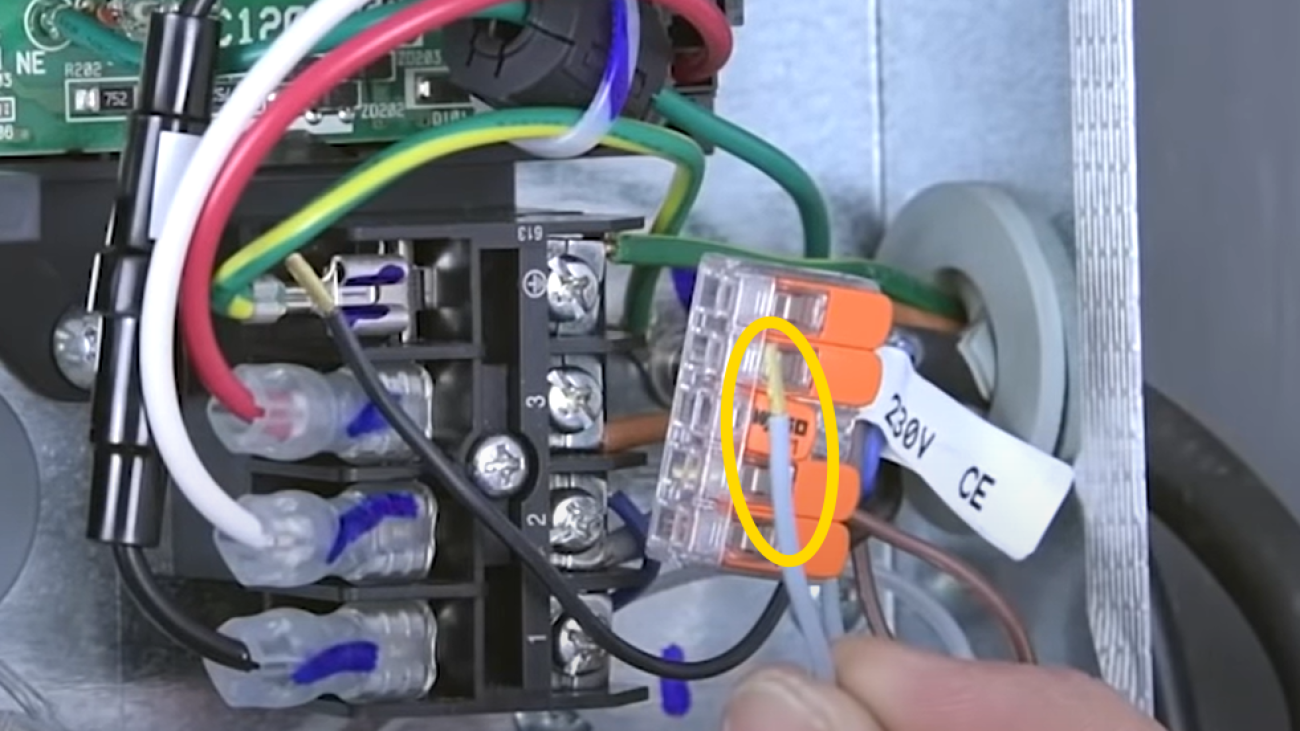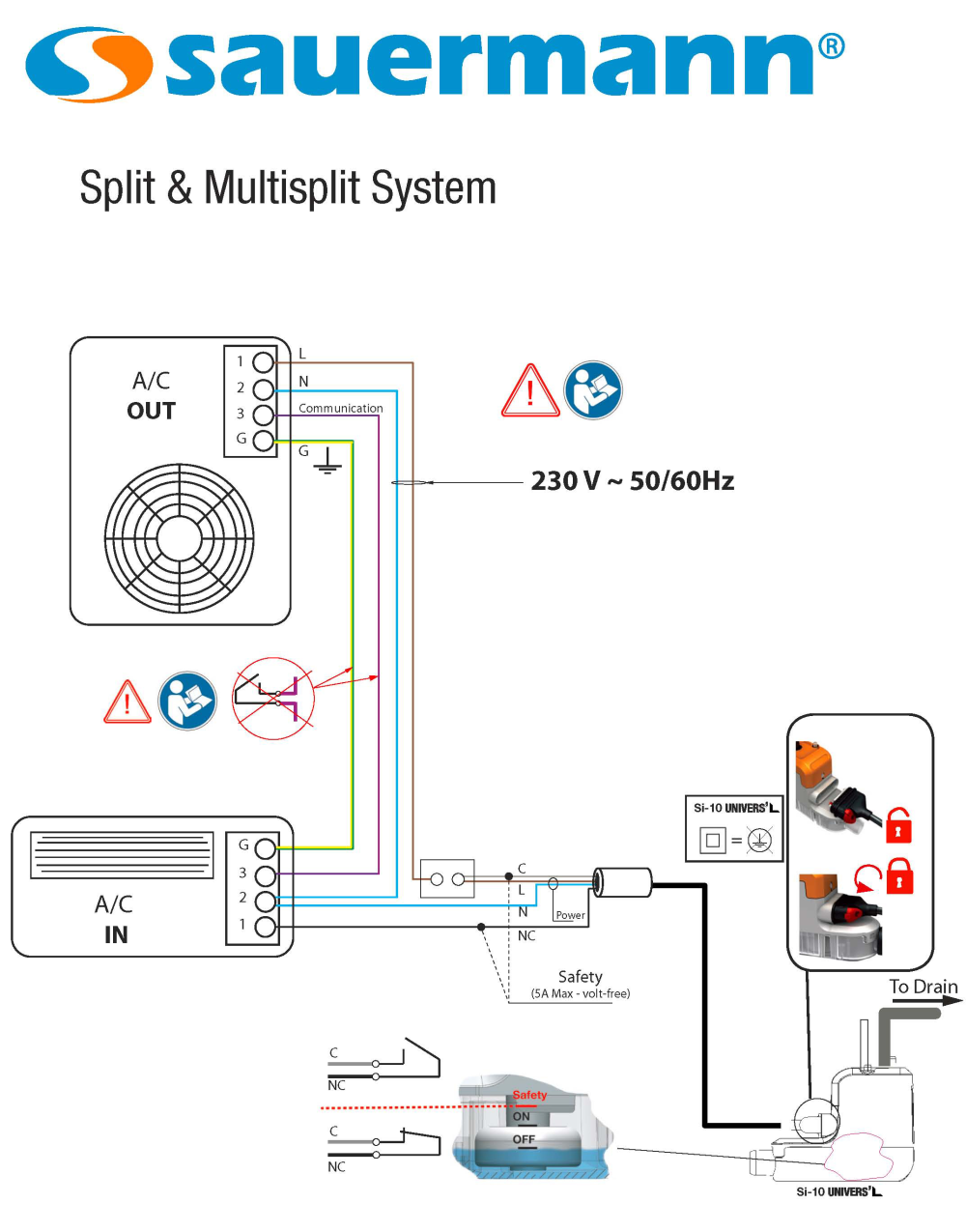Connecting a mini pump alarm circuit: why it matters and how to do it

Connecting a mini pump couldn’t be simpler, as demonstrated in our latest video showing how to replace the Si-10 Univers’L model on a Delta Pack in just one minute! But there’s a vitally important detail that demands attention: connecting the alarm circuit in order to avoid any nasty surprises.
In this article, we’ll explain why this minor connection matters so much. And we’ll help you carry out this apparently confusing yet ultimately straightforward task.
What is the alarm circuit in a condensate removal pump?
The alarm is designed to prevent the excessive build-up of condensate, guarding against leaks and overflows that can cause severe water damage – and in some cases, electrical damage that can cripple an air conditioning unit.
A mini pump for an air conditioning unit contains a detection unit with an internal float. When this float reaches its maximum level, it mechanically triggers a circuit-breaker that instantly cuts the power supply to the split inside the air conditioner.
For boilers, the system works differently: rather than cutting the power supply to the boiler (which would lead to an extremely inconvenient loss of heating and hot water), the tank pump alarm connects a power-supply circuit that triggers an audible or visual warning.
-
Mini pump for air conditioning units: NC (normally closed) alarm circuit that opens to cut the power supply to the unit.
-
Boiler pump: NO (normally open) alarm circuit that closes to turn on power in order to trigger a warning (visual or audio alarm).

Why should you install a mini pump alarm?
Connecting a pump’s alarm is a simple yet effective way to guard against a whole range of complications:
-
The pump stops working: the condensate is no longer removed, but the detection unit alarm system remains operational, even when there is no power supply to the pump.
-
The pump is under-powered: the pump isn’t powerful enough to remove all the condensate. The alarm is triggered to stop the flow of condensate, which helps to prevent complications by giving sufficient time for the surplus to be pumped out. At this point, the only way to keep the air conditioning unit running uninterrupted is to replace the pump with a more suitable model.
-
The system malfunctions: in most cases, this is a caused by an issue with the drain pipe, which can become blocked, fouled or pinched, thereby preventing the condensate from flowing freely and stopping the pump from discharging it. Anything can happen – even a spider’s web blocking the pipe!
-
The installer faces legal action: where a leak or overflow causes water damage, the insurer may seek to hold the installer legally liable if they observe that the pump’s alarm system hasn’t been installed to the manufacturer’s specifications.
How to install a mini pump alarm
The electric circuit for a condensate pump alarm is located on the power phase line, coming from the "L" brown wire. The pump receives power coming from the external unit of the split (A/C OUT), and then channels power back to the internal unit from the grey wire (C) to the black wire (NC).
| Although these wires may be slender in appearance, they are more than capable of carrying the power needed for the internal split which, after all, is nothing more than a large fan. |

On this diagram, the grey "C" wire is connected to the power inlet (brown "L" wire from the external unit), and the circuit-breaker for the pump alarm is situated just before the black "NC" wire supplying power back to the internal unit. It’s controlled by the position of the float, which opens the circuit when it exceeds the high (Safety) position.
| Some manufacturers of air conditioning units don’t allow the pump to be powered directly from the external unit. This isn’t a problem because there’s a workaround: simply set up an independent power supply circuit for the pump, but still connect the return black "NC" wire to the internal unit so that the alarm functions. |
One final detail: since the grey “C” wire is the source of the black "NC" return cable to the internal unit, it’s powered independently from the pump. Therefore, the pump always remains power supplied via the brown “L” wire (which is the main phase power supply line, doubled to independent "C" and "L" power wires). So when the pump cuts off the power to the internal unit, it retains its own, separate supply, allowing it to empty the tank. Once the tank is empty, the float in the detection unit falls back to its normal position, closing the alarm circuit and reactivating the internal unit of the split.
|
Consequently, there’s no risk of false positives – the alarm only triggers when there’s a genuine condensate removal issue:
|
See this detailed diagram (which comes with all our mini-pumps) for more details, and for connection instructions for VRF air conditioning units.





Add new comment